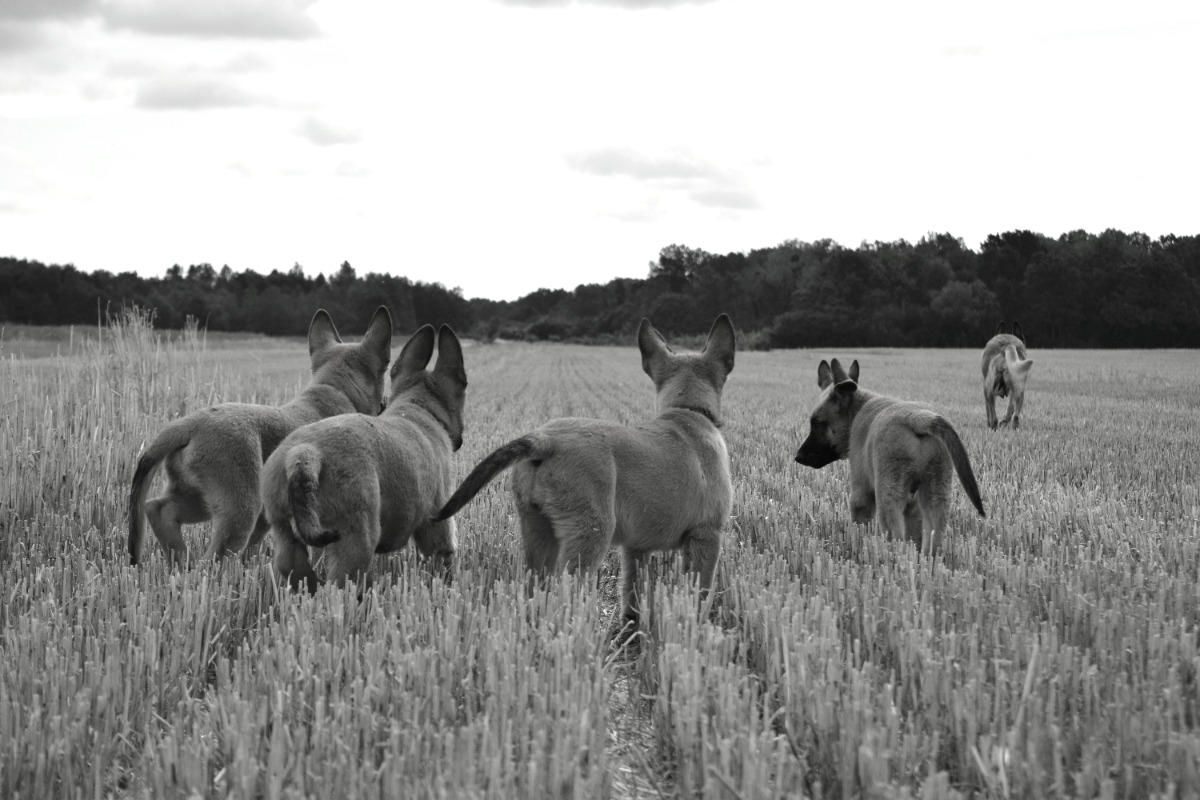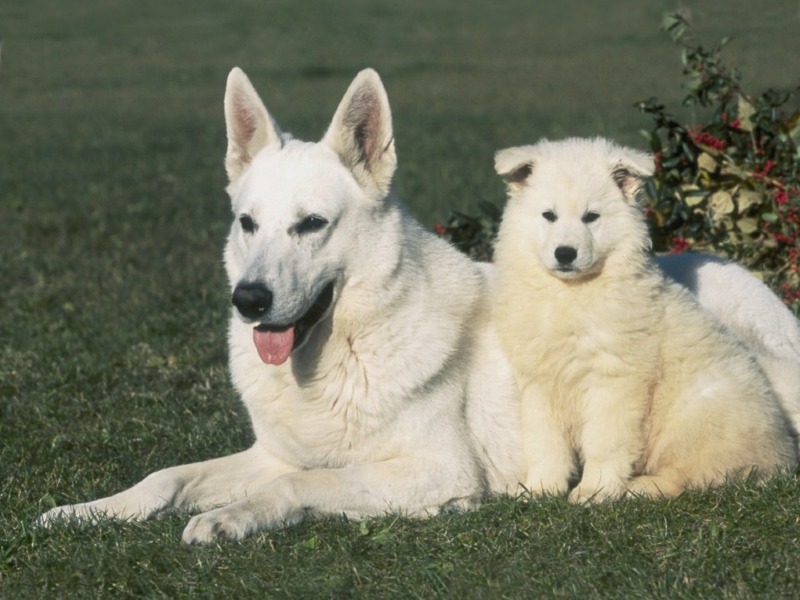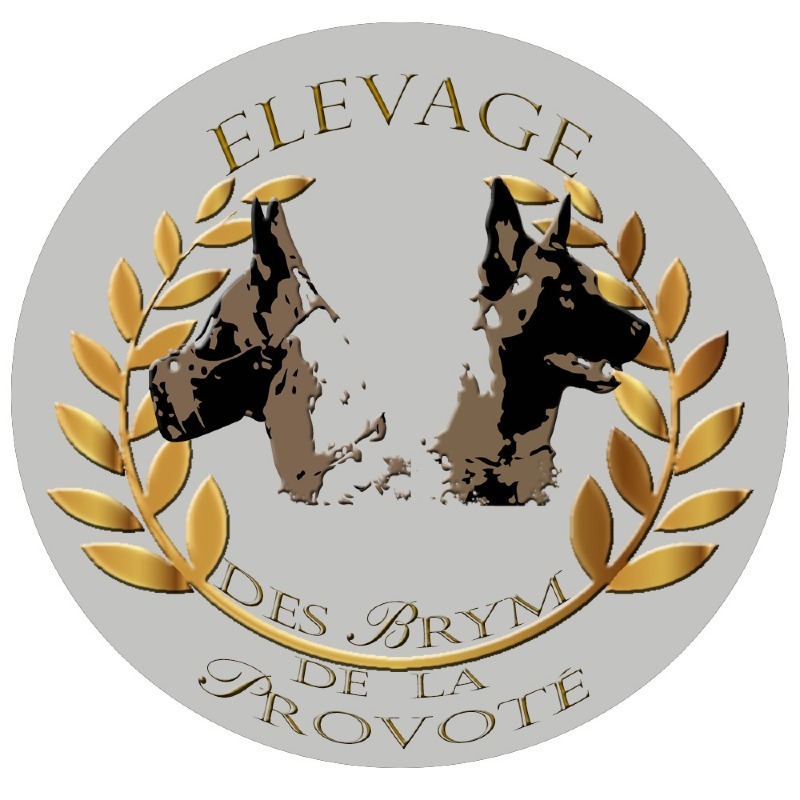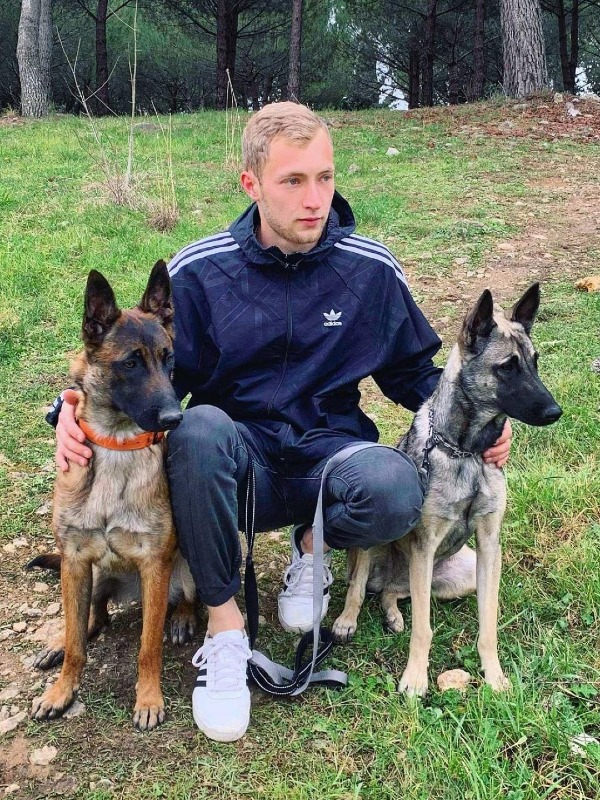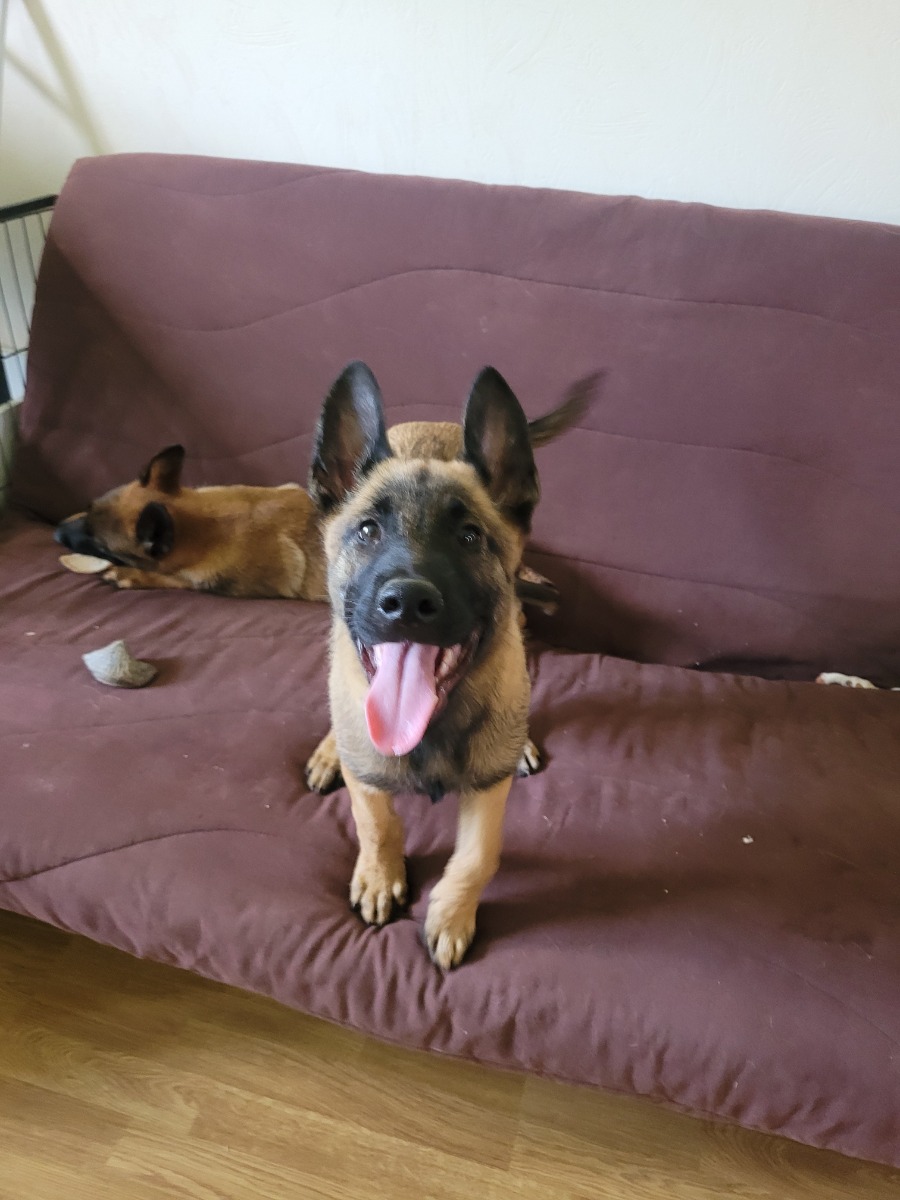Belgian shepherd malinois
Welcome to our page dedicated to the breed of dog belgian shepherd malinois!
Here, you will find all the useful information about belgian shepherd malinois. This descriptive profile will allow you to discover the aspects of this breed. You can notably consult information about the average price, monthly and annual upkeep expenses, their health, name ideas, as well as their official recognition by competent authorities.
Explore this page to discover everything you need to know.
Overall description of the breed
The Belgian Malinois Shepherd Dog is, as its name suggests, of Belgian origin. The breed was created by a group of passionate breeders led by Professor Reul of the Veterinary School of Cureghen. Their aim was to develop 4 varieties of shepherd dogs in Belgium, including the Groenendael, Tervuerens, Laekenois and Malinois. The first official Belgian Shepherd Club was founded in September 1891 and the first standard was defined and published in 1894, it will be the starting point of all the lineages we know today.
The Tervuren and the Groenendael are distinguished by their long coat, of a fawn colour, grey for the former and black for the latter, as for the Malinois, its coat is short, fawn and silky. The Malinois is a direct descendant of the sheepdogs found in Belgium, originating from the Mechelen region. The Laekenois, on the other hand, has a semi-long coat with a rough texture, and is the least common of the four. Their morphologies are absolutely identical in every respect, the difference between all these varieties is based solely on the length and texture of the coat. The International Cynological Federation registered it definitively on January 1, 1956, and its current standard was published on March 13, 2001, encompassing the four varieties, the Groenendael, Tervuerens, Laekenois and Malinois.
Officially recognized in 1909, the Belgian Malinois Shepherd is well proportioned and ideally built for the tasks that have been assigned to it over the course of its evolution, they are hardy dogs, which do not need to spend a lot of money! Lower and less heavy than its cousin the German Shepherd, its head is well shaped, long, but without exaggeration, it remains proportional to its muzzle, which is fine and chiselled. His eyes are of medium size and always dark in colour. The Belgian Shepherd is a very athletic dog, all muscle, yet he retains an extraordinary suppleness and impressive vigour. Solidly built, their neck and shoulders are stocky, with a firm, compact topline, and their lower legs are thick and particularly energetic, allowing them to be powerful in their movements.
The character of the Belgian Malinois Shepherd was essentially designed for work, obedience and listening have no secrets for him. Extremely efficient as a guard dog, he is clever, lively, energetic and very courageous, he will not hesitate to defend his territory against all intruders who come to venture there. They are also very good family dogs and can be gentle and affectionate, especially with children. However, their vigour can sometimes seem brutal with young children, and constant supervision is required during playtime.
They are very loyal to their owners and would not hesitate to give their lives for them in the event of danger. All four varieties of Belgian Shepherds are overflowing with energy, their daily expenditure needs are very high, without intense activity or frequent stimulation, the Malinois could develop serious behavioural problems or become destructive, even aggressive. Also selected for its calmness, it knows how to keep its self-control if the situation requires it, despite its great vitality, it can also live peacefully in a comfortable home and remain calm if no event comes to disturb its rest.
The Belgian Shepherd is a versatile dog and is particularly valued in a variety of fields such as security, police, military, missing persons, anti-terrorism and anti-drug trafficking. The Belgian Shepherd can bring a lot to a family if it gives him time and attention, if you are looking for a faithful companion, sporty and ready to do anything to please you, the Malinois will correspond to you in every way, devoted and loyal, he will think of you before thinking of himself!
Adult: The Belgian Shepherd Dog Malinois will weigh 55 to 66 lbs for the male and 44 to 55 lbs for the female, his height at the withers will be 23.6" to 26" for males and 22" to 24.4" for females.
Awareness of acquiring an animal
Each animal is a sensitive being, deserving love, attention and care.
When you choose to adopt an animal, you take on the responsibility of ensuring its health and well-being throughout its life.
To learn more about animal welfare, we invite you to consult our FAQ by clicking the button below:
Origins
The Belgian Malinois Shepherd is originally from Belgium, more precisely from the region of Malines, from which it takes its name. This breed is one of the four varieties of Belgian Shepherds, alongside the Tervueren, Groenendael, and Laekenois. The Malinois was developed in the late 19th century by Belgian breeders who sought to create a versatile working dog capable of herding and protecting property. The ancestors of the Malinois were used as shepherd dogs on Belgian farms, where their intelligence, agility, and robustness were greatly appreciated. Breeders selected these dogs for their exceptional working abilities and stable temperament, resulting in the breed we know today. The Belgian Malinois Shepherd is now recognized for its skills as a working dog in various fields, including law enforcement, search and rescue, and canine sports.
History
The history of the Belgian Malinois Shepherd begins at the end of the 19th century in Belgium. In 1891, the Belgian Shepherd Dog Club was founded to standardize and promote the different varieties of Belgian Shepherds, including the Malinois. In 1901, the Malinois was officially recognized by the Royal Society of Saint-Hubert, the Belgian cynology organization. During the two World Wars, Malinois were widely used as messenger, sentinel, and detection dogs thanks to their intelligence and ability to work under pressure. After World War II, the popularity of the Malinois extended beyond Europe, notably to the United States, where it was adopted by law enforcement and military forces. Today, the Belgian Malinois Shepherd is widely recognized as an exceptional working dog and is commonly used in service roles including drug and explosives detection, search and rescue, and canine sports competitions.
Standard
The standard of the Belgian Malinois Shepherd breed is defined by several cynological organizations, including the Fédération Cynologique Internationale (FCI). The Malinois is a medium-sized dog, harmonious, well-proportioned, and elegant with a proud and alert demeanor. Its head is carried high, with a moderately long skull and a moderate stop. The eyes are slightly oval in shape, dark brown in color, expressing intelligence and liveliness. The ears are erect and triangular, of medium size. The body is powerful but not heavy, with a well-developed chest and a straight and firm back. The tail is well-set and carried in action, but never curled or curved laterally. The coat is short, dense, well-laid, with a thick undercoat for good protection against the weather. The standard emphasizes the harmony of proportions and the lively and attentive character of the Malinois.
Physical characteristics
The Belgian Malinois Shepherd is a medium-sized dog, with a height at the withers ranging from 60 to 66 cm for males and from 56 to 62 cm for females. Its weight generally varies between 25 and 30 kg for males, and between 20 and 25 kg for females. The Malinois coat is short, straight, dense and well laid, with abundant undercoat. Accepted colors include charcoal fawn with a black mask. White markings are tolerated on the chest and toes. The body structure of the Malinois is square and well muscled, giving it great agility and endurance. Its eyes are dark brown, almond-shaped, and its ears are erect and triangular. The tail is strong at the base and well furnished, reaching at least the hock. Its overall appearance is that of an alert, intelligent dog always ready for action.
Character
The Belgian Malinois Shepherd is renowned for its exceptional character, combining intelligence, liveliness, and loyalty. It is an energetic, curious dog that is extremely devoted to its master. The Malinois is very protective and has a strong guarding instinct, making it an excellent protection and working dog. It is known for its great learning ability and willingness to please, making it particularly well-suited for canine sports disciplines such as agility, ring training, and search and rescue work. In a family setting, the Malinois is affectionate and playful, but may be reserved with strangers. It requires early and ongoing socialization to ensure it remains balanced and well-adjusted. Its assertive character requires an experienced master capable of providing firm yet fair training.
Life expectancy
The Belgian Malinois Shepherd has an average life expectancy of 12 to 14 years, although some individuals may live longer with proper care and good hygiene. This longevity is relatively standard for medium-sized dog breeds. To maximize the duration and quality of life of your Malinois, it is crucial to provide him with a balanced diet, regular exercise, and regular veterinary visits to monitor his health. Hereditary diseases can be minimized through careful selection of breeding stock and appropriate health tests. Malinois are generally robust and active throughout their lives, but like all dogs, they can be prone to age-related health problems such as arthritis. Proactive prevention and constant care can greatly contribute to a long and healthy life for your Malinois.
Exercise and activity needs
The Belgian Malinois Shepherd is a very energetic dog that requires a significant amount of daily exercise to stay physically and mentally healthy. It needs several hours of activity per day, including long walks, interactive games, and training sessions. Mental activities are just as important as physical exercise for this intelligent dog. Puzzle games, dog sports like agility, flyball or canicross, and search and rescue missions can help channel its boundless energy. Without adequate exercise, the Malinois can become destructive and develop problematic behaviors. It thrives in environments where it can expend energy and use its intellectual abilities. For a Malinois owner, it is crucial to be able to dedicate daily time to meet the exercise needs of this active and dynamic dog.
Recommended diet
The Malinois Belgian Shepherd's diet should be high quality, balanced, and tailored to its high level of activity. A diet rich in proteins, with a good proportion of healthy fats, is essential to support its energy and muscle mass. Premium kibble or raw meat-based diets (BARF) are often recommended. The quantities vary according to age, weight, and activity level, but generally, an active adult Malinois will require between 300 and 500 grams of food per day, divided into two meals. In terms of cost, feeding a Malinois can range between 50 and 100 euros per month. It is important to monitor its weight and adjust portions accordingly to avoid obesity, while ensuring all necessary nutrients for optimal health.
Training and obedience
The Belgian Malinois is an extremely intelligent and eager-to-please dog, making it very receptive to training. However, due to its energy and assertive temperament, it requires early and ongoing training. Training methods based on positive reinforcement are most effective, as they tap into its natural desire to work and learn. Early socialization is crucial to ensure it develops balanced behavior and is comfortable in various situations. Formal training classes, group activities, and regular home training sessions are recommended to maintain its engagement and obedience. Due to its protective nature and guard instinct, it is essential to teach it solid basic commands and expose it to a variety of people and environments. A well-trained Malinois can excel in many fields, including canine sports, detection work, and protection.
Behavior with children
The Belgian Malinois Shepherd can be an excellent companion for children, provided it is properly socialized and trained from a young age. This protective and loyal dog can develop a very strong bond with the children of the family, often considering them as part of its "herd" to protect. However, due to its energy and vigor, it is important to monitor its interactions with young children to avoid unintentionally rough behaviors. Teaching children how to interact properly with the dog is equally crucial to prevent any incidents. The Malinois can be playful and affectionate, but it is essential to provide it with proper training to understand boundaries and acceptable behaviors. Adult supervision is always recommended to ensure a harmonious coexistence between the dog and the children.
Compatibility with Other Animals
The compatibility of the Belgian Malinois Shepherd with other pets depends largely on its socialization and training. When socialized from a young age, a Malinois can coexist harmoniously with other dogs and pets. Its herding instinct may sometimes push it to want to control the movements of other animals, which requires appropriate training and supervision. With cats or small animals, it is crucial to introduce them gradually and under supervision to avoid any predatory behavior. Each Malinois is unique, and some may be more tolerant and sociable than others. However, with proper socialization and training, many Malinois can get along well with other animals. It is recommended to monitor their interactions and encourage positive behaviors to promote good compatibility.
Grooming needs
The Belgian Malinois has relatively modest grooming needs due to its short and dense coat. A weekly brushing is usually sufficient to remove dead hair and keep the coat clean and healthy. During shedding seasons, which typically occur twice a year, more frequent brushing may be necessary to manage hair loss. Baths are only necessary when the dog is particularly dirty, as too frequent baths can strip the natural oils from the skin and coat. It is also important to regularly check and clean the ears to prevent infections, trim the nails to prevent discomfort, and brush the teeth to maintain good oral hygiene. Overall, the Malinois is a breed that requires minimal grooming, making it a relatively easy dog to maintain.
Health
The Belgian Malinois is generally a robust and healthy breed, but like all dogs, they can be prone to certain health issues. Common conditions include hip and elbow dysplasia, eye disorders such as cataracts, and skin conditions like allergies. It is crucial to choose breeders who perform health tests on their breeding dogs to minimize the risk of these hereditary problems. Malinois can also be sensitive to conditions like epilepsy and thyroid issues. A balanced diet, regular exercise, and periodic veterinary visits help maintain optimal health. Vaccinations and regular parasite treatments are also essential. By proactively caring for their health, owners can ensure a long and healthy life for their Malinois.
Average price
The average price of a Belgian Malinois Shepherd varies depending on several factors, including breeding, lineage, and region. In general, a quality Malinois puppy for companionship can cost between 800 and 1500 euros. Puppies from working or competition lines, with pedigrees and titles, can cost between 1500 and 3000 euros, or even more. Initial purchase costs often include basic vaccinations, deworming, and sometimes a first veterinary visit. It is important to note that the cost of a puppy not only reflects the quality of the dog, but also the breeder's investment in the health and well-being of the parents and puppies. Looking for a reputable breeder and asking questions about the health and socialization of the puppies is essential for making an informed purchase.
Expenses
Apart from the initial purchase cost, the average monthly expenses for a Belgian Malinois include food, veterinary care, accessories, and potentially training classes. High-quality food costs can range from 50 to 100 euros per month. Routine veterinary care, including vaccinations, parasite treatments, and health check-ups, can add around 20 to 30 euros per month. Accessories such as toys, leashes, collars, as well as coat maintenance, can result in additional expenses. If training classes or canine sports activities are considered, they should also be included in the budget. On average, monthly expenses for a Malinois can range between 100 and 200 euros, depending on the level of care and activities provided.
Name ideas
Choosing a name for a Belgian Malinois Shepherd can be fun and meaningful. Here are some suggestions: Max, Rex, Luna, Bella, Thor, Shadow, Stella, Duke, Rocky, Ruby, Leo, Nova, Zeus, Zara, Blaze, Ace, Diesel, Maya, Hunter, Lexi, Storm, Titan, Jax, Athena, Roxy, Scout. When choosing a name, make sure it is easy to pronounce and not too similar to basic commands. A short name, preferably two syllables, is often more effective in getting the dog's attention and facilitating training. Also consider your dog's personality and appearance to find the perfect name that will suit him throughout his life.
Legislation and regulation
In France, the Belgian Malinois Shepherd is not classified as a dangerous breed, so it does not fall under categories 1 and 2 of the law on dangerous dogs. However, like all dogs, it must be properly identified by microchip or tattoo and vaccinated against rabies if traveling abroad. Owners must comply with local regulations regarding leash control and cleanliness. In some countries, specific regulations may exist for working dogs, especially those used by law enforcement or security services. It is essential to inquire about specific legislation in each country or region regarding the import, breeding, and ownership of Malinois. Compliance with regulations ensures not only public safety, but also the well-being of the animal.
Official recognition
The Belgian Malinois Shepherd is recognized by several cynological organizations around the world. In Belgium, it is recognized by the Société Royale Saint-Hubert (SRSH). The Fédération Cynologique Internationale (FCI) also recognizes the breed and has established the official standard for it. In the United States, the Malinois is recognized by the American Kennel Club (AKC) and the United Kennel Club (UKC). In Great Britain, it is recognized by the Kennel Club. In France, it is recognized by the Société Centrale Canine (SCC). These organizations oversee registrations, dog shows and compliance with breed standards. Recognition by these organizations ensures that Malinois meet strict breed criteria and promotes responsible breeding and preservation.
Pedigrees
The pedigree is an official document attesting to the genealogy of a purebred dog. For the Belgian Malinois Shepherd, several recognized breed clubs offer pedigrees. In France, the Société Centrale Canine (SCC) and the Club du Chien de Berger Belge (CCBB) are the main organizations issuing pedigrees. In Belgium, the Société Royale Saint-Hubert (SRSH) registers the pedigrees of Malinois. In the United States, the American Kennel Club (AKC) and the United Kennel Club (UKC) are the references for pedigrees. In Great Britain, the Kennel Club is the competent authority. These breed clubs also organize shows, working trials, and selection events to promote breed standards and genetic improvement. They offer a valuable resource for Malinois breeders and owners by providing information on pedigrees and health.
Destination and usage
The Belgian Malinois is a versatile working dog, widely used in various fields thanks to its intelligence, energy, and adaptability. It is particularly valued by law enforcement and military for detection, protection, and search and rescue tasks. Malinois also excel in canine sports such as agility, ring, and schutzhund, where their athletic skills and quick learning ability are showcased. As a companion dog, the Malinois is devoted and protective, although it requires strict socialization and training to become a balanced family member. Its qualities also make it an excellent candidate for roles in animal therapy and assistance, providing support and comfort to those in need. The Malinois is an incredibly adaptable dog, capable of succeeding in various demanding roles.
Prohibitions
There are no specific bans on owning a Belgian Malinois in France or most other countries, as long as local regulations on dog ownership are followed. However, some countries or regions may have particular restrictions on working dogs or guard dogs, potentially including Malinois, due to their extensive use in law enforcement and security. It is crucial to research local laws before getting a Malinois, especially if you plan to move or travel abroad. Adhering to local rules on leash wearing, vaccination, and identification is essential to avoid fines or legal issues. A good understanding of legal obligations contributes to responsible ownership and the well-being of the dog.
Breeders of Belgian shepherd malinois
Want to see more breeders of Belgian shepherd malinois?
Check out the page of our directory listing all breeders of Belgian shepherd malinoisClassified Ads of Belgian shepherd malinois
Want to see more ads of Belgian shepherd malinois?
Check out the page listing all the ads of Belgian shepherd malinoisBreed clubs of belgian shepherd malinois
No of belgian shepherd malinois breed clubs are currently registered on Preeders.
If you would like to highlight your breed club, sign up for free now and be the first to appear on this page.

